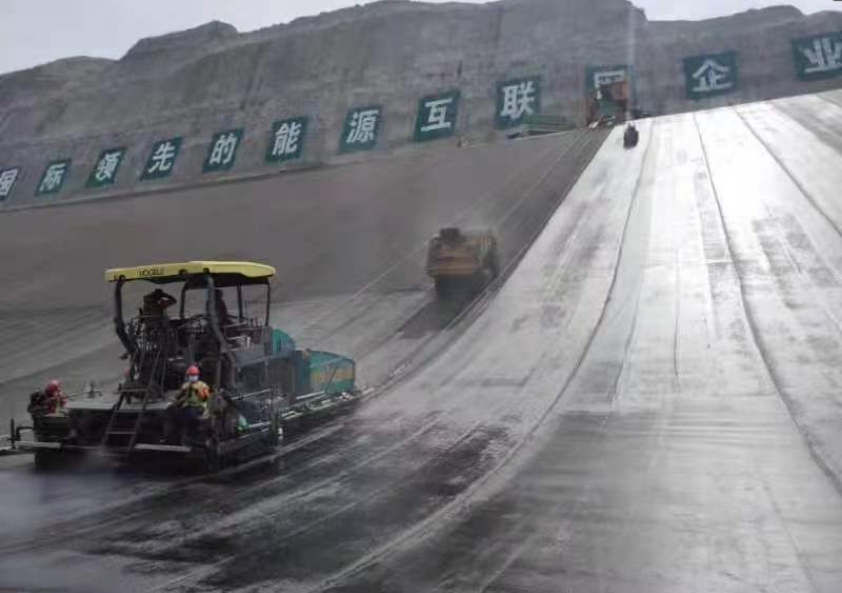Main Participants: WANG Zhengxing, MA Lintao, YANG Weicai, XIA Shifa, ZHANG Fucheng, HAO Jutao, SUN Zhiheng, JIA Libing, WU Zhizhao, WANG Yaosheng
1.1 Background
China is expected to see a boom in pumped-storage hydroelectricity as the country announced its goals of carbon peaking and carbon neutrality. Asphalt concrete plates, given their outstanding anti-seepage performance and adaptability to foundation deformation, has become a mainstream anti-seepage material used in pumped-storage power stations. According to relevant standards, hydraulic asphalt concrete should be made of alkaline aggregates. But certain projects find it difficult to meet this requirement due to shortages or long transportation distances. Therefore, it is meaningful to research on the application of acid aggregate to anti-seepage asphalt concrete plates either from an industry perspective or based on national development strategies. .
In response to the challenges in the application of acid aggregate to asphalt concrete plates, the research team explored the application scheme of acid aggregate based on its actual adoption in projects such as the upper reservoir of the Yimeng Pumped Storage Power Station in Shandong Province, China.
· Having conducted research on the mechanism of and methods for evaluating the viscosity between aggregate and asphalt to address the poor viscosity;
· Having conducted research on the method for evaluating the water immersion durability of hydraulic asphalt concrete to address the absence of a method for evaluating the service life of acid aggregate asphalt concrete plates when immersed in water;
· Having developed an anti-spalling agent exclusive for hydraulic engineering uses to address the long-time immersion of hydraulic asphalt concrete in water, which is distinct from the working condition of road projects;
· Having conducted research on the mixing and construction processes for asphalt concrete made of acid aggregate.
· Having revealed the mechanism of asphalt spalling based on the research on surface energy and developed SK-A, an anti-spalling agent exclusive for hydraulic engineering uses, significantly improving the viscosity between acid aggregate and asphalt to a level comparable to that of alkaline aggregate and eliminating the limitations on the usage of acid aggregate in anti-seepage asphalt concrete plates;
· Having established for the first time an evaluation model for water immersion durability based on the time-temperature equivalence principle, filling the gap in relevant standards;
· Having proposed a new method for evaluating the viscosity between aggregate and asphalt;
· Having developed the construction process and special equipment for acid aggregate to be used in asphalt concrete.
The achievements have been applied to the asphalt concrete plates of the upper reservoir of the Yimeng Pumped Storage Power Station, which closed its gates for impoundment in July 2021. Currently, the seepage from the upper reservoir is approximately 3.5 L/s, far below the designed level, indicating good anti-seepage effects.
The asphalt concrete plate project at the upper reservoir of the Yimeng Station is the world’s first anti-seepage project using acid aggregate. It signaled an end to the dependence on alkaline aggregate in asphalt concrete plates, showing sound exemplary and scaling-up effects.
Fig.1 The impact of anti-spalling agent SK-A on the water immersion durability of asphalt concrete
Fig.2 Anti-spalling agent on-site mixing

Fig.3 Placing of asphalt concrete using acid aggregate

Fig.4 The completed upper reservoir of Yimeng Pumped Storage Power Station in Shandong Province, China